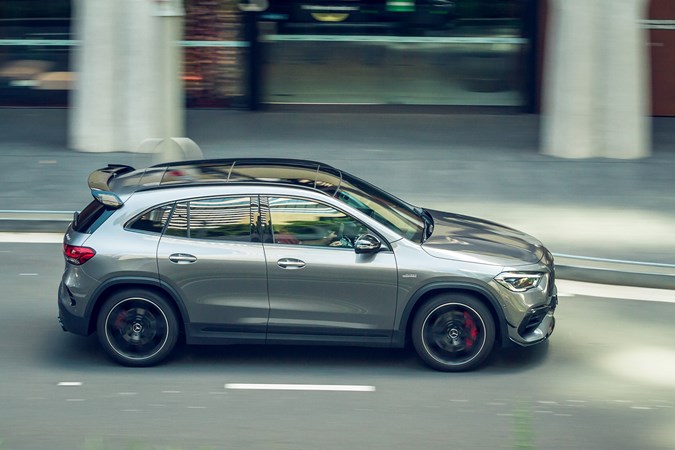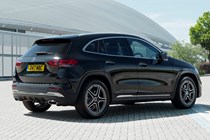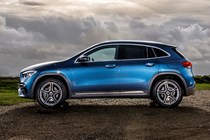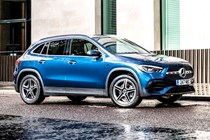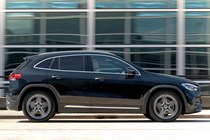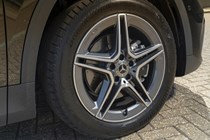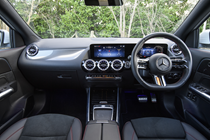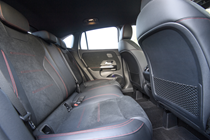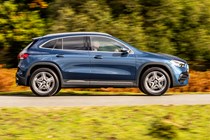
Mercedes-Benz GLA-Class engines, drive and performance
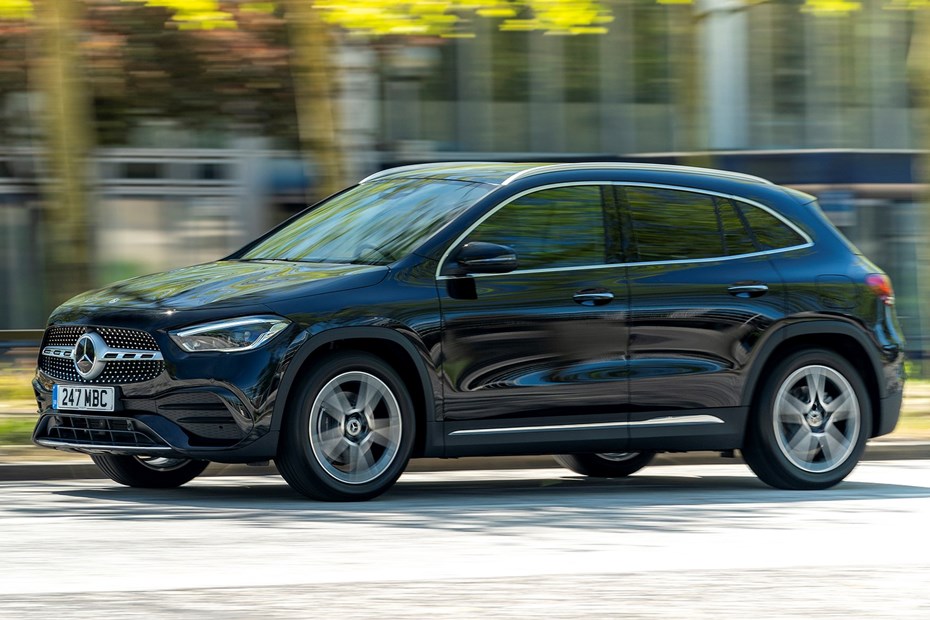
- Two petrol, two diesel and a plug-in hybrid
- Plug-in hybrid surprisingly unimpressive
- Two Mercedes-AMG versions if you need more zest
Petrol engines
The GLA range currently comprises of two non-sporting petrol and two high-performance versions. The entry-level GLA 200 delivers adequate performance, with excellent refinement and enough performance to more than keep up with the flow.
There’s plenty of low-end pulling power, making it feel strong and responsive when laden or on hills, meaning you don’t need to change down unnecessarily. This punch does begin to wear off at 4,000rpm though, well before the engine’s redline. A brilliant seven-speed dual-clutch automatic transmission is available – and it’s very well suited to this car.
Diesel engines
As for the diesels, we suspect the 200d will turn out to be all you need, based on how impressive it is in the A-Class. However, in the GLA, we’ve so far only tried the more expensive 220d, which pulls strongly throughout its rev range and generally feels in tune with its standard eight-speed automatic gearbox.
What does this mean? Well, the GLA feels faster off the line and uses less fuel at high speed.
Hybrid engine
The GLA 250e’s electric power comes from a 102hp motor and a 15.6kWh battery, while the petrol engine is the same 1.3-litre you’ll find in the GLA 200, albeit rated at 160hp. Combined they offer 218hp and 450Nm, so the plug in should – in theory – be the best of the bunch.
It’s not. The handover between electric and combustion power is not smooth, and the car never feels as effortless as the torque and 7.1 second 0-62mph time would imply. It also struggles to deliver the stated electric range even at slow speeds, though it is naturally very quiet and smooth when locked into EV mode.
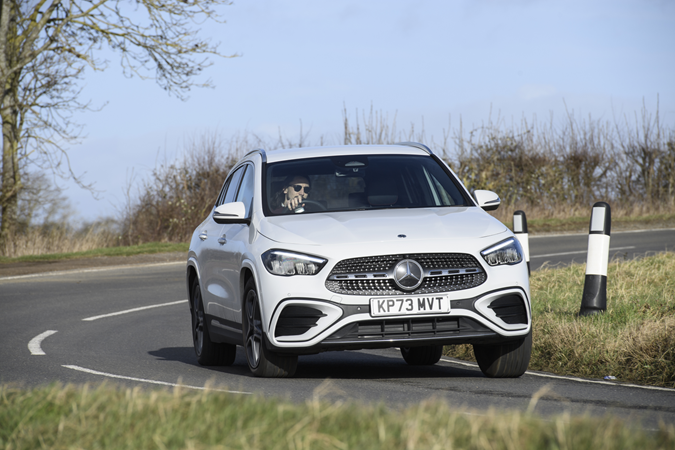
With less boot space, a smaller fuel tank, higher fuel consumption (the only GLA to drop below 40mpg officially) and 235kg extra weight to carry, the GLA 250e is really saved only by the low benefit-in-kind and potential for zero-emission short drives.
High-performance AMG engines
There are two AMG variants – the GLA35 and GLA45S 4Matic+ – which are both powered by a 2.0-litre turbocharged engine. In the former, it boasts 306hp, while the latter delivers an astonishing 421hp.
The GLA35 features strong responses and remains punchy throughout the rev range, with a characterful exhaust note and rapid gearshifts from the standard-fit eight-speed, dual-clutch transmission. The 0-62mph time is a not-too-shabby 5.2 seconds, which will be quick enough for most – that is until you consider the more powerful version…
The GLA45 is something else again. All of that power results in a 0-62 time of 4.3 seconds and a top speed of 168mph. Make no mistake, this is a fast car, albeit one that normalises its prodigious performance to the point where it lures you into a false sense of security. The GLA 45 makes all this power and acceleration very accessible and approachable.
What’s it like to drive?
- If you can, specifiy your GLA with 4Matic
- Agile handling, refined at speed
- AMG GLA35 and GLA45 are genuinely capable
The GLA is competent on the road and is decently refined. The latest incarnation of the 4Matic four-wheel drive system offers better control thanks to electrically operated clutches (rather than the mechanical ones previously) in the four-wheel drive system.
The GLA rides pleasantly, with soft enough suspension for it to glide along without getting agitated by most road surfaces, though it will jolt you back into reality over even fairly shallow potholes. In conjunction with the soft and comfortable ride, the GLA’s electrically assisted steering is light and accurate for an overall easy driving experience, if a bit disconnected. Those seeking an engaging drive should look toward other compact SUVs like the BMW X1 as the GLA is a little too soft to coax you into putting your foot down.
In the Individual drive mode setting of Dynamic Select, the driver can tune the suspension, steering, throttle response and gearbox action to their personal preference. Sport unlocks the engine’s upper revs, Eco introduces a sedative touch, while Comfort offers a mix of both.
Opt for 4Matic and it’s largely front-wheel drive, with the system deciding when it needs to push drive to the rear axle. We reckon it’s worth consideration due to the enhanced traction and more involving feel it lends to the handling.
What’s the AMG like to drive?
There’s no getting around the fact that the GLA is a tall and heavy SUV so you have to frame its handling talents within the limitations of its size. The AMG specific suspension has been tuned for high cornering speeds and low bodyroll. It’s surprisingly successful in this regard, feeling taut and predictable even when dealing with multiple direction changes.
The fast steering teamed with grippy 4Matic all-wheel drive makes for a confidence-inspiring combination, giving you plenty of assurance when cornering quickly and plenty of room for error when you get it wrong.
The GLA45 has more agility thanks to a more sophisticated rear axle that can divide torque between the left and right wheels too. It’s no surprise that the GLA45 handles like a big A45 hatchback – not delivering the ultimate in driver thrills but very fast and effective none-the-less. Bodyroll is kept admirably under control for such a tall car, too.
